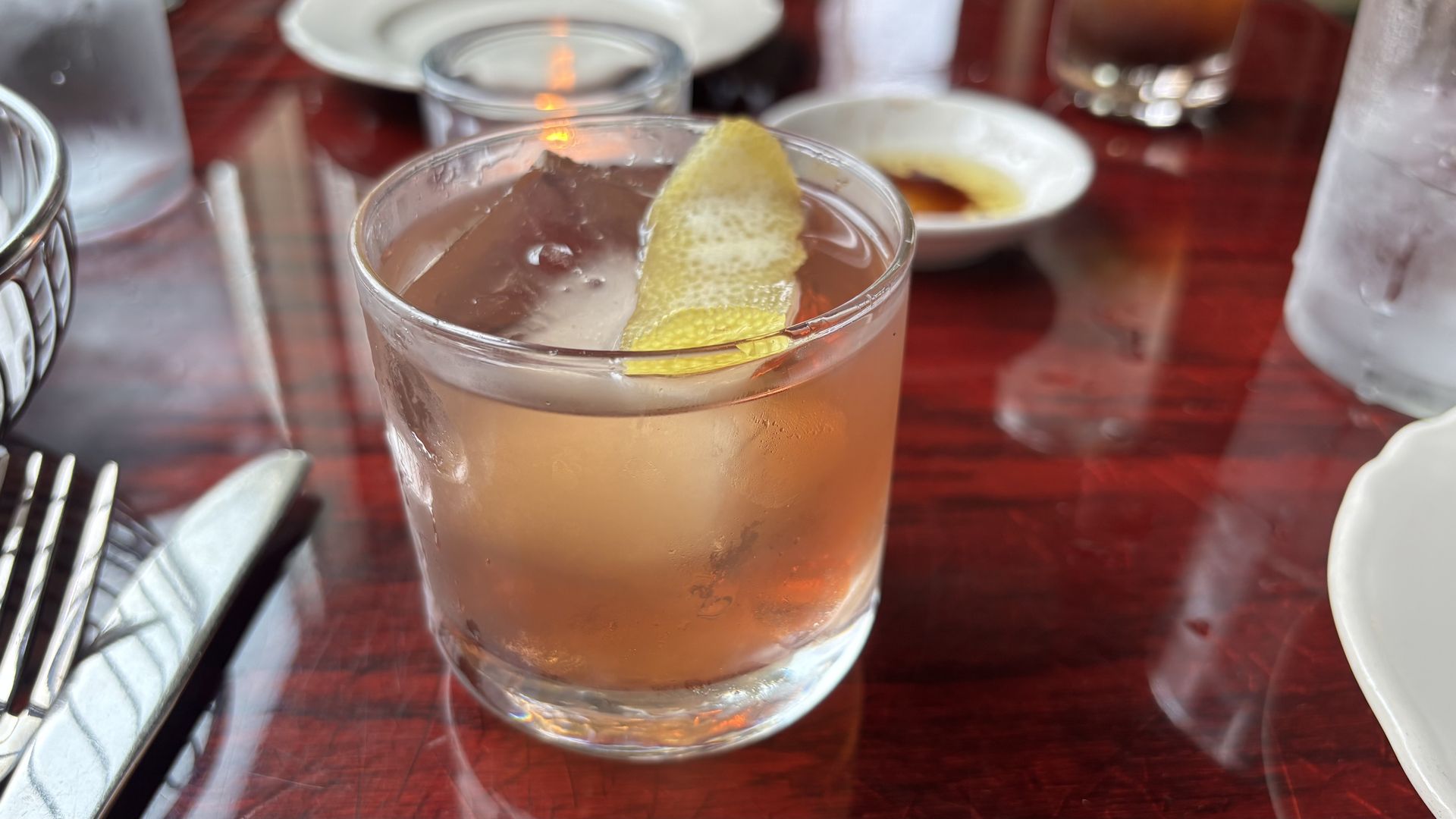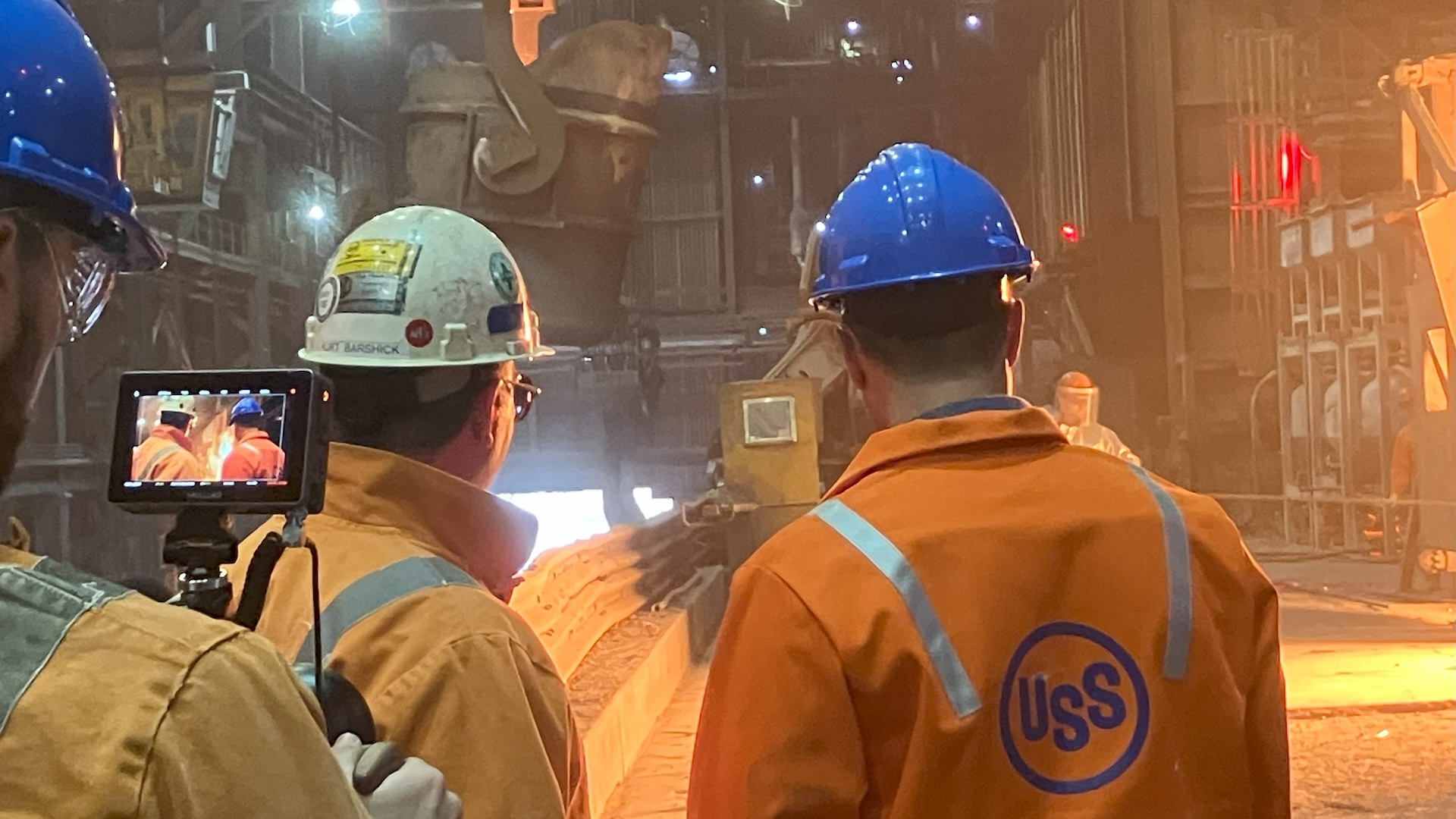| |
|
|
| |
|
Presented By U. S. Steel
|
| |
|
Axios Pittsburgh
|
|
By
Chrissy Suttles, Ryan Deto and Alexis Johnson
·
Jun 20, 2025
|
|
TGIF! It's officially summer, so we're bringing you a special SPF survival guide. ☀️ Today's weather: Sunny, highs in the mid-80s. 🎧 Sounds like: "I Can See Clearly Now," Johnny Nash. 🎂 Happy early birthday to our Axios Pittsburgh member Bj Friedman! 🌡️ Situational awareness: A wave of potentially dangerous heat will hit the region starting Sunday, per the National Weather Service. Today's newsletter is 940 words, a 3.5-minute read.
|
| |
| |
|
1 big thing: 🧴 Why Europe still has better sunscreen
|
|
By Carly Mallenbaum
|
| |

|
|
|
Illustration: Allie Carl/Axios
|
| |
|
Dermatologists had hoped that an active sunscreen ingredient popular in Europe would be available in the U.S. by summer — but the Food and Drug Administration still hasn't approved it. Why it matters: U.S. sunscreens lack some of the advanced UVA protection found in international brands, due to outdated FDA regulations, experts say. Catch up quick: Bemotrizinol, a sunscreen filter, seemed close to FDA approval late last year. - The FDA hasn't approved a new sunscreen filter in over 20 years.
- Last year, an FDA spokesperson told Axios that "one manufacturer is working with the FDA to generate the requested data for bemotrizinol," but the agency hasn't shared further detail and didn't respond to Axios' request for comment this year.
What we're hearing: Bemotrizinol — which has been available in sunscreens in other parts of the world for years — is photostable (doesn't break down once exposed to sunlight) and better at protecting against UVA rays than U.S. filters, dermatologist Henry Lim told Axios. Between the lines: International sunscreens sold in the U.S. — like Korean brands — are often modified or reformulated to meet U.S. regulations. - That can change their ingredients and textures, said Nazanin Saedi, a dermatologist and associate professor at Thomas Jefferson University.
What's next: "The soonest a decision will be made is 2026," Saedi told Axios. - "So do not delay in stocking up on your sunscreen this summer!"
Keep reading
|





|
| |
| |
|
2. ☀️ Our UV index
|
|
By
Carly Mallenbaum and
Chrissy Suttles
|
| |
 Data: Tropospheric Emission Monitoring Internet Service; Map: Erin Davis/Axios Visuals The sun's ultraviolet rays peak around noon from June through August in Pittsburgh. Why it matters: That's when it's especially important to limit time in the sun and cover up. - UV radiation causes sunburn and is a risk factor for skin cancer.
By the numbers: A UV index of 6-7 is the "high" range, 8-10 is "very high," and 11 and up is "extreme." - Pittsburgh's average UV Index at noon during the summer months is 8.8.
Between the lines: Altitude, latitude, cloud cover, ozone level, time of day and seasons all factor into the UV index. It's a myth that you can't get a sunburn when it's cloudy — and that you need to feel the sun's hot rays to get a sunburn. - In reality, 80% of solar UV radiation can penetrate light cloud cover — and infrared heat is different from UV radiation (which you can't feel), according to the EPA.
A simple way to estimate your UV exposure: Look at your shadow. - If it's shorter than you are (around midday), UV levels are higher and more likely to cause sunburn.
|





|
| |
| |
|
3. Vitamin D vs. sunscreen
|
|
By Carly Mallenbaum
|
| |

|
|
|
Illustration: Sarah Grillo/Axios
|
| |
|
Getting sun helps you get vitamin D, but too much sun is bad for your skin — and wearing sunscreen could reduce vitamin D absorption. Why it matters: It feels like a conundrum. Reality check: Regular sunscreen use likely won't cause vitamin D deficiency, according to dermatologists. What they're saying: Your body needs very little UVB sunlight to start making vitamin D, Lim told Axios. - And since sunscreen is often not applied to all exposed skin evenly, "chances are, you are still getting a fair amount of vitamin D," Saedi said.
Yes, but: If you're mostly indoors or fully covered when outside, experts recommend taking a vitamin D supplement. Lim suggests one multivitamin daily. Share this story
|





|
| |
| |
|
A message from U. S. Steel
|
|
Building bridges with our neighbors
|
| |

|
| |
|
U. S. Steel’s Community Advisory Panels meet quarterly at three plants in Mon Valley — Clairton, Braddock, and West Mifflin.
The goal: Ensure transparency and ground decision-making in real community voices.
Get local updates.
|
| |
| |
|
4. Melanoma cases rise in women under 50
|
|
By Carly Mallenbaum
|
| |
 Data: Cancer.gov; Map: Erin Davis/Axios Visuals Melanoma cases are rising in younger people, particularly in women under 50, a National Cancer Institute study found. Why it matters: Skin cancer is the most common cancer in the U.S., and melanoma is the deadliest type. By the numbers: In Pennsylvania, there were 20.2 new cases of melanoma per 100,000 people per year from 2017-21. Between the lines: Many cases are preventable. - Exposure to UV light from the sun or indoor tanning beds causes most melanoma cases, per NCI data.
- Young women are still most likely to indoor-tan, even though their tanning rates declined after 2010, per the most recent data available.
Yes, but: Overdiagnosis could be contributing to the melanoma rate increase, according to the report. - A New England Journal of Medicine study found that routine skin exams have increased and pathologists now more often classify ambiguous lesions as melanoma.
|





|
| |

|
A message from U. S. Steel
U. S. Steel empowers workers to protect the environment — because they live here, too. Watch more.
|
|
| |
|
5. Weekender: Music and markets
|
| |
/2025/06/17/1750189624725.gif)
|
|
|
Illustration: Brendan Lynch/Axios
|
| |
FridayWatch the world's best pogo athletes defy gravity with flips, tricks, and 10-foot jumps at Pogopalooza. - 📍 6th Street between Penn Avenue and Fort Duquesne Boulevard, Downtown on Friday; 1256 Franklin Ave., Wilkinsburg on Saturday-Sunday
- ⏰ Starts at 5:30pm Friday; 3pm Saturday-Sunday
- 💵 Free! Full schedule and registration here
SaturdayGrab a picnic basket and a blanket and head to WYEP's Summer Music Festival, featuring Sammy Rae & The Friends, DEHD, and more. - 📍 Schenley Plaza, Oakland
- ⏰ Starts at 4pm
- 💵 Free!
Join Pittsburgh Sound + Image for an evening of cat-themed short films — 11 works by local and national artists. - 📍 Harris Theatre, 809 Liberty Ave., Cultural District
- ⏰ 8pm
- 💵 $10+
Head to the Burgh Bazaar, a monthly Saturday market with local artists, live music, food and drinks. - 📍Outside the Benedum Center, 7th Street and Penn Avenue, Cultural District
- ⏰ 12–5pm
- 💵 Free!
SundayTake the family to Bubbles Burgh, a celebration featuring bubble machines, balloon animals, food trucks, and a vendor market. - 📍 The Waterfront, 149 W. Bridge St., Homestead
- ⏰ 1-4pm
- 💵 Free!
|





|
| |
| |
|
6. 🍸 1 cocktail to go: Roses and Rye
|
| |

|
|
|
Illustration: Brendan Lynch/Axios
|
| |
|
👋 Ryan here. This cocktail at Dish Osteria was so good I had to share. Dig in: Rittenhouse Rye whiskey mixed with Cocchi Rosa and rose bitters. Staff described it as a spring Manhattan. ⛲️ The vibe: As close as one can get in Pittsburgh to a backstreet Rome Osteria. Pro tip: Roses and Rye isn't part of Dish's summer menu, but bartenders will make it upon request. Where: Dish Osteria, 128 South 17th St., South Side Cost: $13 Six-word review: Full-bodied, yet bright and refreshing
|





|
| |
| |
|
A MESSAGE FROM U. S. STEEL
|
|
Steel Links: A Pittsburgh story forged with heart
|
| |

|
| |
|
U. S. Steel’s Mon Valley Works team helps tell the story of Steel Links, a new WQED documentary shining a light on the region’s industrial roots — and its surprising connection to golf.
Tune into wqed.org, pbs.org or the PBS app to stream this love letter to Pittsburgh.
Watch now.
|
| |
|
🥔 Chrissy might go see the 4-ton potato that's visiting Westmoreland County this weekend. 🥃 Ryan is visiting Boston, and hoping to try Dr. McGillicuddy's Mentholmint. 🥤 Alexis is heading to Milkshake Factory, which has buy-one, get-one vanilla milkshakes today in honor of National Milkshake Day. Thanks to Chloe Gonzales for editing this newsletter. Editor's note: Wednesday's story on Juneteenth events this week has been corrected to remove a reference to WAMO Day, which is on June 28.
|

|
|
Support your local newsroom and gain access to exclusive insights from reporters, event invitations and more!
|
|
|
|